
The geometer moths are moths belonging to the family Geometridae of the insect order Lepidoptera, the moths and butterflies. Their scientific name derives from the Ancient Greek geo γεω, and metron μέτρον "measure" in reference to the way their larvae, or inchworms, appear to measure the earth as they move along in a looping fashion. A very large family, it has around 23,000 species of moths described, and over 1400 species from six subfamilies indigenous to North America alone. A well-known member is the peppered moth, Biston betularia, which has been subject of numerous studies in population genetics. Several other geometer moths are notorious pests.

Quercus coccinea, the scarlet oak, is a deciduous tree in the red oak section Lobatae of the genus Quercus, in the family Fagaceae.
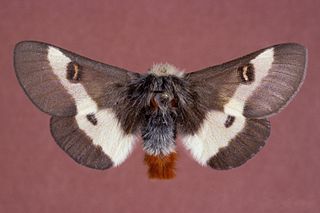
The buck moth is a common insect found in oak forests, stretching in the United States from peninsular Florida to New England, and as far west as Texas and Kansas. It was first described by Dru Drury in 1773. The larvae typically emerge in a single generation in the spring. The larvae are covered in hollow spines that are attached to a poison sac. The poison can cause symptoms ranging from stinging, itching and burning sensations to nausea. Subspecies Hemileuca maia maia is listed as endangered in the US state of Connecticut.

Alsophila aescularia, the March moth, is a species of moth of the family Geometridae. It is found throughout Europe and can be a pest of fruit trees.

Marumba quercus, the oak hawk-moth, is a moth of the family Sphingidae. The species was first described by Michael Denis and Ignaz Schiffermüller in 1775.
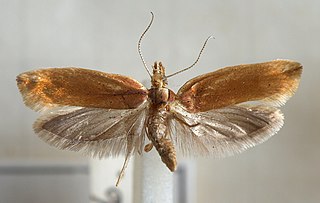
Ypsolopha ustella, the variable ypsolopha moth, is a moth of the family Ypsolophidae. It is found in most of Europe and is also present in North America.

The leaf blotch miner moth is a moth of the family Gracillariidae. It is found in Europe, including Turkey.
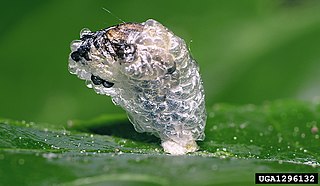
Coleophora kuehnella is a moth of the family Coleophoridae. It was first described by Johann Goeze in 1783 and is found in Asia and Europe.

Acleris semipurpurana is a species in the moth family Tortricidae, and one of several species of moth commonly known as oak leaftier or oak leaf tier. The larvae feed on the leaves of oak trees in the Eastern United States and southeastern Canada which can be a major cause of defoliation. The loss of leaves can kill or damage the affected trees, which are chiefly in the Lobatae or red oak section of Quercus, or oaks.
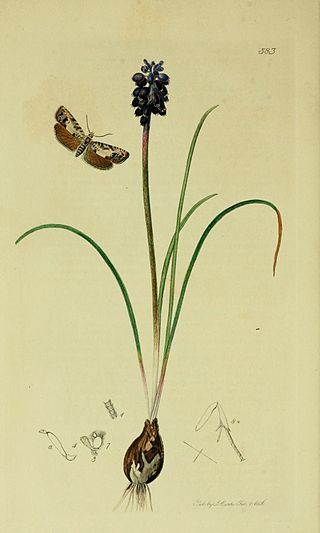
Pammene fasciana, the chestnut leafroller, is a moth of the family Tortricidae. It is found in Europe and across the Palearctic.

Cydia amplana, the rusty oak moth, is a moth of the family Tortricidae. It is found from northern, central and southern Europe to Asia Minor, south-western Russia and Transcaucasus.
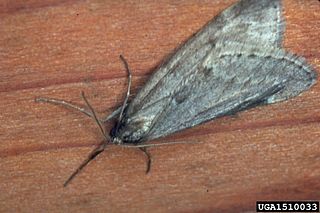
Alsophila pometaria, the fall cankerworm, is a moth of the family Geometridae. The species was first described in English by the KJV Bible [Joel 1:4]. It is found in North America from Nova Scotia west to Alberta, south to Colorado and California and zones of Spain
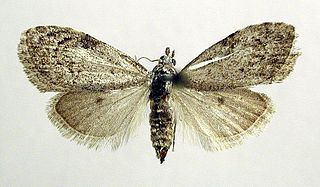
Nola confusalis, the least black arches, is a moth of the family Nolidae. It is found in most of Europe, east to eastern Asia and Japan.

Pandemis corylana, the chequered fruit-tree tortrix, hazel tortrix moth, filbert tortricid or barred fruit tree moth, is a moth of the family Tortricidae. It is found from northern and central Europe to Siberia, Korea and Japan.
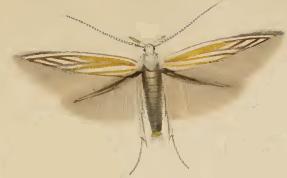
Coleophora currucipennella is a moth of the family Coleophoridae found in Europe. It was first described by Philipp Christoph Zeller in 1839.
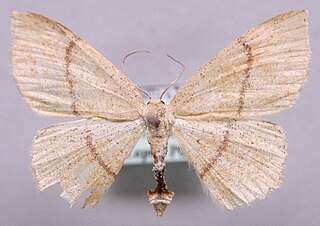
Cyclophora quercimontaria is a moth of the family Geometridae. It is found from southern Scandinavia to central and southern Europe and from western Russia to the Caucasus, northern Iran and the northern parts of Asia Minor.
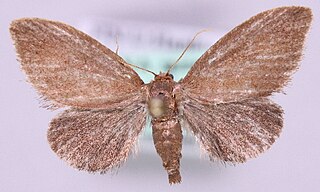
The triangle is a species of moth of the family Limacodidae. It is found in most of the Palearctic realm. The wingspan is 15–20 mm. Adults are on wing from the end of May to mid July in one generation per year.
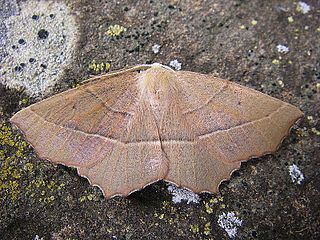
Campaea honoraria, the embellished thorn, is a species of moth in the family Geometridae. It is found in most of southern and central Europe. The species was first described by Michael Denis and Ignaz Schiffermüller in 1775.
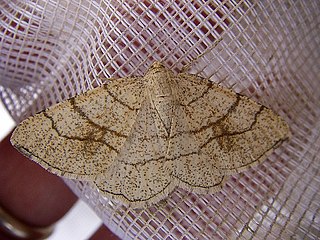
Adactylotis contaminaria, the brindled three-lined moth, is a species of moth in the family Geometridae. It is found in Belgium, France, Spain, Switzerland and Italy.

Psoricoptera gibbosella, the humped crest, is a moth of the family Gelechiidae. It is widely distributed in Europe. Outside of Europe, it is found in Turkey, North Africa, China, Japan, Korea, Siberia and the Russian Far East. The habitat consists of mature woodlands.



















